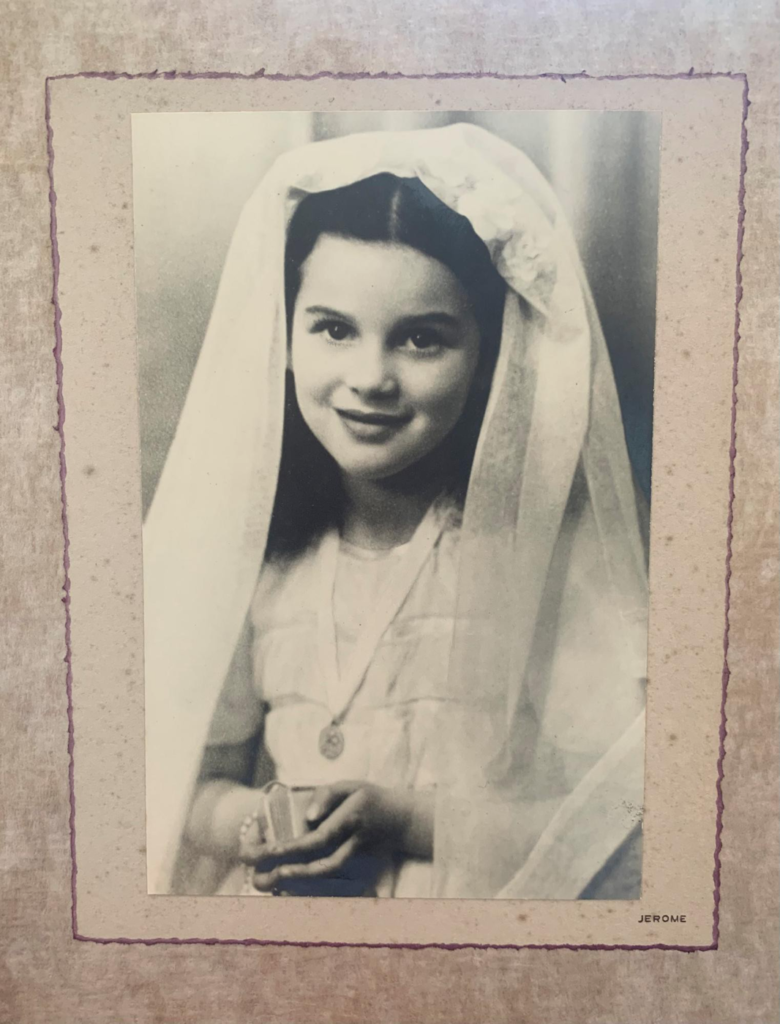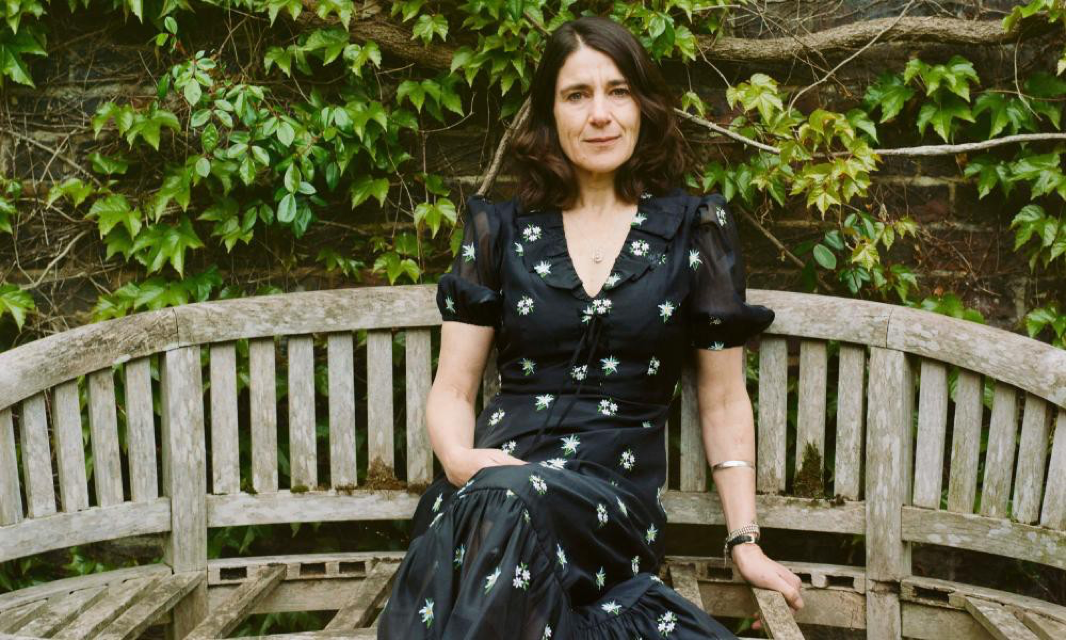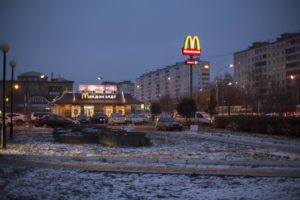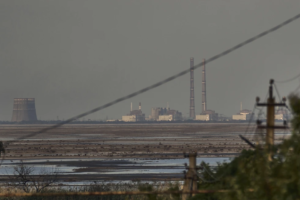My mother’s relationship with her parents was uneasy. Born into a strict Irish Catholic family, she’d been evacuated as a baby, sent to a convent boarding school at seven, and when, at 18, she found herself pregnant, she was so fearful of their condemnation that she kept the news a secret. It was some years later that a relative saw her in London at a bus stop with two small girls and wrote to her parents: I didn’t know your daughter was married!
But my mother wasn’t married. At 17, soon after her family had moved back to Ireland after a lifetime running pubs in London, she’d fallen in love with my father, the painter Lucian Freud, and the bohemian world that he frequented. It was the early 60s, and, as innocent as a Catholic girl was raised to be, it wasn’t long before she was pregnant. At first she was delighted – there’d be someone of her own to love – but her euphoria was soon tinged with worry. She’d heard rumours of what could happen to a girl like her, made to work in laundries, locked away in homes (she’d spent the last year of her education at a convent outside Cork), and she was seized with fear that this could be her fate. She risked one last trip to Ireland, disguising her five-month bump, and didn’t go again.
I was six, my sister eight, when we first met our grandparents. You’ve made your bed – my grandfather had written on hearing of our mother’s situation – now you must lie *in it*. But here we were, in the lounge of a hotel, and although they’d been conditioned not to accept us (their illegitimate offspring) it wasn’t long before they thawed. Soon we were taking the boat across to Cork, our mother dropping us at the farm they ran, returning weeks later to pick us up. I never questioned why she didn’t stay. She was a single mother, needed a break herself, and anyway, I loved the farm, riding high on hay bales as we brought in the harvest, herding cows, bottle-feeding lambs. Over the years I came to love my grandparents, too ( the gruff, teasing presence of my grandpa; the fluttering affections of my nana) and I began to consider: had my mother been exaggerating when she’d whispered her fears? Was it really necessary to have kept our births a secret?

And maybe that’s why it was possible, and kept on being possible. The unlikeliness of it – daughters locked away – no ripple visible on the green, unbroken surface, even after so many thousands of girls, some as young as 12, had vanished into institutions. The doors closed after them, and life went on. There was silence from the families, silence from the girls themselves who were told to change their names on being admitted, and on leaving – never with their babies, however hard they begged to keep them – they were warned never to speak of their misfortune, to keep the shame of it to themselves.
One day at mass, sitting beside Nana, I asked if I could stand with the others and stick out my tongue for a wafer from the priest. No, she held me down, and later she explained, her voice serious and quiet, that not only had I received no holy communion, I’d not been baptised. Just a few drops of holy water… she brightened with the hope… and it would be achieved. I imagined myself in a white gown, my photograph in pride of place. Back in England I passed on the good news, doing my best to replicate my nana’s accent. Just a few drops of holy water. But my mother’s eyes flashed, furious. I’d seen her angry, now she was spitting. This will never, ever happen!
My mother talked little about her childhood. She was fiery, and passionately independent, and preferred to live life in the present. Only occasionally did she reflect on the misery of the convent where she’d boarded, how often she ran away, only to be sent back. Were there no kind nuns? I asked, and she said no, there weren’t, although, even then, I hoped there might have been, just one.
Many years later I happened to see The Magdalene Sisters, a film that tells the story of four young Irish girls, shut away for little more than the crime of being female. The film was set in the mid-60s, and two of the teenagers were pregnant. My mother could not bring herself to watch it, and it was only then that I began to wonder: what might have happened if her own pregnancy was discovered on that last visit home? Was it possible she’d have ended up at Bessborough, a mother and baby home run by nuns from the order of the Sisters of the Sacred Hearts of Jesus and Mary, a convent on the outskirts of Cork?
I didn’t know about Bessborough then. I only discovered its existence when I began researching a novel about what might have been if she’d gone to the wrong people for help, starting my work by sheer coincidence just as a commission of investigation was launched into mother and baby homes across Ireland. The official report, five years in the making, and published in January this year, states that 9,000 children died in these homes and many more thousands of women and girls were brutally abused. The taoiseach Micheál Martin, it’s been said, has found it a distressing read. Stories of women made to tar the drive late into their pregnancies, to scrub and polish floors, to clip the grass by hand. Other testimonies tell of babies ripped away while breastfeeding, given up for adoption without consent.
I’d read descriptions online, in books, in newspapers, of the cruelty inflicted on these women, and the stories of their now grown children and the lies and obfuscations that have made the search for birth mothers near impossible, even when these same women were on a desperate search themselves. During the course of writing I learned how these institutions functioned as businesses, and that even as the women who arrived there were scorned for the hurt that they’d caused God, in reality they were coveted as the source of unpaid work, as were the valuable assets they brought with them.

In the 1950s and 60s Ireland was known as a place where it was easy to adopt. There was red tape in Britain. America was awkward. But in Ireland, as long as you were Catholic, an orphan could be got for the asking. Many of these testimonies have been presented as a powerful and harrowing drama by the Abbey theatre in Dublin, Home: Part One; and after all this time it’s not only the women’s words that are so powerful, it’s the absence of their silence. Silence is what the church relied on. Silence fed by shame. And just as their families never spoke of what had become of their nieces, sisters, daughters (sometimes believing they had gone away to work in England), often the men responsible had no idea their girlfriends were even pregnant. It was the priest whom they usually turned to, who directed them to a place where they’d be safe. Everything will be taken care of. One of the testimonials in Home: Part One recalls how a girl of 15 was promised help with a pram.
No wonder I struggled to believe my mother’s fears. On the surface, life was tranquil, but at the time of her first pregnancy, could my grandparents have withstood the pressure, and the repercussions of not acting? Anything was better for a baby than to be brought up outside marriage, and with this in mind, might they have sought help from the priest?
Fuelled by these questions, I reread my nana’s letters. They were scattered with PGs (Please God) and GWs (God Willing), and among the news of aunts and cousins, I saw that, rather than condemnation, they were full of fear. Without the institutions my grandmother believed in (marriage, and the church), she was sure we’d fall through society’s net. I saw, too, as the years passed, how often she’d prevailed on me to visit. I’m not getting any younger, she wrote. And: Couldn’t your father pay for you to come? How I wish now that I’d gone before it was too late. As I looked at the envelopes, addressed in her familiar blue hand, her character came back to me – her elegance and style, the pride she took in the business she ran hosting paying guests, the “40 winks” she took after the lunch was served and cleared. Never did I see her without lipstick or perfectly set hair, and as I lingered over the signature of her letters – from your ever loving Nana and Grandpa – I felt her bony fingers as she clasped me to her each time we said goodbye.
My research was gruelling. The isolation and suffering of the women in these homes, the cruel neglect of the children. Some institutions refused to allow breastfeeding, others encouraged it, but most girls were forced to listen to their babies scream throughout the night, too terrified to go to them, however hungry, dirty or soaked through they were. There was no pain relief, whatever the complications of their labour. No stitches. No treatment for mastitis or suppurating sores. The doctor was rarely, if ever, called. It was God’s punishment, they were told, and none of this would have come about if nine months earlier they’d kept their legs together. There’s an account by a 1950s Bessborough midwife, June Goulding, who describes the venom of the sister who oversaw the births, forcing the labouring girls to sit for hours on a bed pan, sending the police out after anyone who had the courage to escape. There were girls there, sometimes children, victims of incest, raped by neighbours, at one time two sisters assaulted by the same man, but never a word about their attackers. The church had found its workforce, and, by insisting a girl stay for as long as three years, cleaning, digging, working in the infamous laundries to pay for their care, they ensured the profitable running of the home.
Women died, but more often it was the babies who didn’t survive. Between 1922 and 1999, 923 children died at Bessborough before their first birthday, although it is still not known where the vast majority are buried. And when, in 1975, two young boys uncovered a sewage pit in the grounds of the old mother and baby home at Tuam, County Galway, run by the Sisters of Bon Secours, they were told the bodies it held were victims of the famine. This, it transpired, was not the truth. At first the site was blessed, and sealed, but later, after years of research by a local historian, Catherine Corless, resulting in an article that detailed the poor living conditions inside the institution and stated that a staggering number of children lost their lives there, a government report was finally commissioned into all such institutions. But it wasn’t until 2017 that the Tuam site was excavated, and the commission confirmed it contained the remains of up to 800 children under three.
The report was still under way when I combined a visit to my aunt – my mother’s younger sister – with one to Bessborough. It was a chilly, rain-swept day as I drove up the curving lane and parked by a statue of the Virgin Mary. I looked up at the three floors of what is now the Bessborough Centre, an organisation for family support, and peered round the side of the building, counting the windows that stretched back, 12 deep, before walking up the stone steps to the front door.
Bessborough had functioned as a mother and baby home until as recently as 1999, but, even so, when I asked for advice at the reception, saying I needed to know how a person might go about tracing a woman who gave birth here in the early 60s, no one could help. I backed away, and, not knowing what else to do, I walked round the grounds, coming across a chapel, with flowers and teddy bears arranged in a shrine. There was a graveyard. Not for the babies – to this day no one knows where they are buried – but for the nuns. Mother Genevieve, Sister Gerarda. And against the walls on makeshift headstones, commemorative messages for some of the children who died. One little boy who lived for six weeks in 1960. My heart burns with my love for you and my soul cries out in sorrow having lost you. Mam. Another – Our Beautiful Angel – died in 1942.
Until recently this chapel was a place where the mothers of lost children could sit and pray on the stone bench, but now, on instruction from the order of the Sacred Heart, it has been deemed an unstable structure, half demolished, and cordoned off.
As I’m leaving, I try the reception one more time. Could anyone help with information? My heart is thudding, and I pretend, although I hate to lie, that I was born there. There is a different woman on the desk now. But still, nobody can help.
My aunt has lived in the same house all her married life, and although I’ve visited over the years, I don’t realise, until I tap her address into the car’s navigation, that it is only 10 minutes from the home. All this time, since she was a teenage bride herself, raising her six children, she’s been living round the corner from Bessborough. I ask if she’d heard of it. Only fleetingly. A neighbour used to warn her daughters: Behave like that and you’ll end up at Bessborough. She’d had no idea, few people did, what went on behind its walls.
I tell her what I’m working on, describe the story I’m writing, and I hear, for the first time, what it was like for the family when my mother stopped being in touch. How desperate their mother was, how furious their father for the suffering she’d caused. I rise to her defence, my beautiful mother, no longer here to do so, and I explain that she was frightened we’d be taken from her, that she’d be locked up. My aunt is quiet. Our father was an honourable man, she says, he’d never have allowed it. But none of us can know what honour really meant, in Ireland, in the 60s, in those dark days.
As I leave Cork city, heading for the airport, I see my mother, aged 18, boarding the ferry, and I imagine her, the bump disguised beneath her coat, standing on the deck. She’d got away with it! And it occurs to me that maybe her mother did know. Maybe she’d waved her daughter off, sent up a prayer – Please God to keep her safe – and never said a word.
• I Couldn’t Love You More, by Esther Freud, is published by Bloomsbury at £16.99). To order a copy, go to guardianbookshop.com. Delivery charges may apply.




